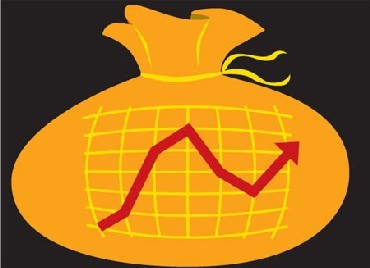 | « Back to article | Print this article |
'It is a good time to accumulate banking stocks'
Religare Securities EVP & head (retail research) Rajesh Jain says it is difficult to say whether the government will able to achieve its desired divestment target but the unavoidable factors like rising oil prices, mounting inflation and stagnant industrial growth will surely affect it and may cause delays for this financial year.
Slow growth and high inflation have been major cause of concern for the Indian economy. How do you view the Indian markets, given these economic conditions?
Concerns about the impact of inflation and monetary tightening on growth have restricted the Indian equity returns so far this year.
Despite inflation being a near-term concern, we feel its impact on economic growth is likely to be limited. The structural growth drivers remain intact and bode well for equities in the medium to long term.
Click NEXT to read more...
'It is a good time to accumulate banking stocks'
The Foreign Institutional Investors (FII's) have been pulling out money from the Indian markets. What is driving them away? How do you view the FII activity in the short to medium term?
The onset of 2011 saw FIIs pulling out their money from the Indian markets due to high volatility and uncertainty; hence, Indian markets started showing weakness and corrected almost 10 per cent this year.
Strong flows in 2010 have resulted in high increase in valuations of many frontline large-cap stocks in the domestic markets.
Currently, it seems FIIs are not seeing Indian markets as a good short-term bet but as a good investment for the medium to long term. As the Indian markets react and valuations come to reasonable levels, they would sooner or later start investing again.
Click NEXT to read more...
'It is a good time to accumulate banking stocks'
Banking stocks have seen a sharp correction since the Reserve Bank of India (RBI) raised interest rates. Do you think this is the right time to take long position in these stocks?
Given the inflationary pressures, we expect another rate increase by RBI in June. However, banking stocks have already factored this in and, after the correction, valuations are cheaper. So, it is a good time to accumulate.
Click NEXT to read more...
'It is a good time to accumulate banking stocks'
Given the fate of the recent follow-on offers (FPOs) and the current market conditions, do you think that the government will be able to achieve the planned divestment target in 2011-12?
The government has a disinvestment target of Rs 40,000 crore (Rs 400 billion) for 2011-12. In the previous financial year, the government garnered nearly Rs 22,500 crore (Rs 225 billion) through sale of shares in SJVN, EIL, Coal India, MOIL, PowerGrid and SCI through its divestment programme, reflecting a shortfall of Rs 17,500 crore (Rs 175 billion).
In the current scenario, though the divestment plan of the government is strong, the global challenges are stronger and, hence, may act as a peril.
However, it is difficult to say whether the government will able to achieve its desired divestment target but the unavoidable plights like rising oil prices, mounting inflation and stagnant industrial growth will surely affect it and may cause delays for this financial year.
Click NEXT to read more...
'It is a good time to accumulate banking stocks'
What is your advice to the retail investors in the current market conditions? Any stock/sector that looks attractive from a medium-term perspective?
Invest in those companies that are fundamentally sound. Investors need to analyse the results carefully before investing.
Going ahead, we expect that auto, pharmaceuticals, FMCG and textiles sectors to do well. Among individual stocks, we like Bajaj Auto, Hero Honda, ITC, Arvind Ltd, Lupin and Sun Pharma.
Click NEXT to read more...
'It is a good time to accumulate banking stocks'
What is your view on the commodity space, especially gold and silver?
If we go by the seasonal pattern, gold may not get to showcase much strength in the near future.
Overall, though on the charts, the yellow metal continues to remain bullish and as long as the prices hold above $1500/ounce in June, long-term investors need not worry.
Seasonal demand of silver is likely to remain low in the forthcoming month, but we can expect the prices to bounce back in prices owing to improving industrial demand and bargain hunting at lower levels.






